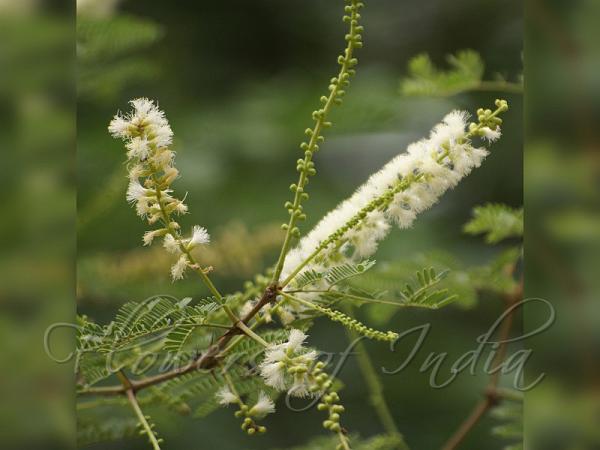|
| Gum Arabic Tree |
|

|

| File size | 130549 |
| Original date | 8/26/09 9:57 PM |
| Resolution | 800 x 600 |
| Flash | Flash did not fire, auto |
| Focal length | 300.0mm |
| Exposure time | 1/500s |
| Aperture | 6.3 |
| Focus Distance | |
| Metering Mode | Multi-segment |
| Camera make | SONY |
| Camera model | DSLR-A100 |
| Sensor type |
|
|
|
|
Photo: |
Botanical name: Senegalia senegal Family: Mimosaceae (Touch-me-not family)
Synonyms: Acacia senegal, Acacia verek
Synonyms: Acacia senegal, Acacia verek
Gum Arabic Tree is a small deciduous acacia tree, native to semi-desert
regions of Sub-Saharan Africa, Pakistan, and northwestern India. It
grows to a height of 5-12m, with a trunk up to 30 cm in diameter. Thorns
are placed just below the nodes, either in threes up to 7 mm long, with
the middle one hooked downwards and the lateral ones curved upwards, or
solitary with the laterals absent. Leaves are double-compound, up to 2.5
cm long. Leaf-axis is finely downy with 2 glands; pinnae are 6–20 pairs;
leaflets are small, 7–25 pairs, rigid, leathery, smooth, linear to
elliptic-oblong, ciliate on margins, pale glaucous-green, tip blunt to
somewhat pointed. Flowers are borne in not very dense spikes 5–10 cm long,
carried on stalks 0.7–2 cm long. Flowers are normally produced with the
leaves. Sepal cup is bell-shaped, glabrous, deeply toothed. Flowers are
white to yellowish, fragrant, stalkless. Pod is straight or slightly
curved, retrap-shaped, 7.5–18 cm long, 2.5 cm wide, thin, light brown or
gray, papery or woody, firm, smooth. The tree produces gum arabic, which
is used as a food additive, in crafts, and as a cosmetic. The gum is
drained from cuts in the bark, and an individual tree will yield 200 to
300 grams. Seventy percent of the world's gum arabic is produced in Sudan.
Flowering: January–March.
Medicinal uses: The gum is used for soothing mucous membranes
of the intestine and to treat inflammed skin. It is also reportedly used
as for its astringent properties, to treat bleeding, bronchitis, diarrhea,
gonorrhea, leprosy, typhoid fever and upper respiratory tract infections.
The gum is used for soothing mucous membranes
of the intestine and to treat inflammed skin. It is also reportedly used
as for its astringent properties, to treat bleeding, bronchitis, diarrhea,
gonorrhea, leprosy, typhoid fever and upper respiratory tract infections.
Medicinal uses:
 The gum is used for soothing mucous membranes
of the intestine and to treat inflammed skin. It is also reportedly used
as for its astringent properties, to treat bleeding, bronchitis, diarrhea,
gonorrhea, leprosy, typhoid fever and upper respiratory tract infections.
The gum is used for soothing mucous membranes
of the intestine and to treat inflammed skin. It is also reportedly used
as for its astringent properties, to treat bleeding, bronchitis, diarrhea,
gonorrhea, leprosy, typhoid fever and upper respiratory tract infections. | Identification credit: Gurcharan Singh | Photographed at Ridge, Delhi. |
• Is this flower misidentified? If yes,